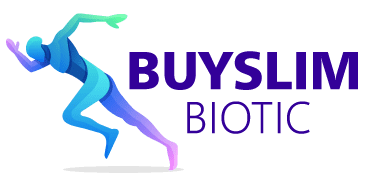Discover the top high-protein foods that fuel your body and promote muscle growth. Our comprehensive guide covers a variety of nutrient-rich options for meat-eaters, vegetarians, and vegans alike. Boost your health and fitness with our expert tips on incorporating these power-packed foods into your daily diet
The top 8 high-protein foods for weight loss are listed here, along with suggestions for integrating them into your diet.
When the total amount of protein in lunch and dinner is high, we consider a meal to be high in protein. Over 25% of the dish is the main course, and each portion is at least 30 grams (or 25 grams for breakfasts). Each serving of our other meals, including bread and desserts, must contain at least 25% protein in order to qualify as high protein.
Why High Protein Foods for Weight Loss?
If you are aiming for a healthy weight loss, prioritize incorporating high protein foods into your diet. Wondering why? High protein foods are know for their high satiety level, meaning they help you feel fuller and more satisfied.
These high protein foods play a significant role in providing essential nutrients necessary to maintain a healthy body. Essential nutrients include vital components that your body cannot produce on its own. Such as essential amino acids (the building blocks of protein), fatty acids, vitamins, and minerals. On average, high protein foods are rich in all of these essential nutrients.
To effectively achieve weight loss without experiencing constant hunger. It is advisable to incorporate foods with a high protein percentage into your diet.

Check out these quick, tasty, and satisfying high protein foods for weight loss:
1. Meat
Meat is delicious, fulfilling, and a great source of protein. Contrary to criticisms of red meat (beef, hog, and lamb), regular intake may be useful for reducing body weight. Managing blood sugar levels, and reducing insulin resistance.
Red meat consumption has also been link to increased strength and muscular growth when paired with resistance training. Taking white meat can also be helpful with weight loss.
It can be difficult to link a benefit to a specific item because the rest of the diet also matters, of course. You can save time and help yourself fulfil your protein needs by cooking an additional serving of grilled. Or roasted meat for dinner and eating the leftovers for lunch the next day.
2. Eggs
It’s difficult to discover a cuisine that is more adaptable than the egg. Eggs offer high-quality protein at a reasonable cost and can be use to make omelets, quiches, baked products, or eat on their own. And entire eggs appear to be superior to egg whites for gaining muscle.
19 grams of high protein are contained in three big eggs. Eggs are a wise protein choice at any time, despite being frequently thought of as a morning staple. You may have a terrific grab-and-go protein choice for busy days by keeping a supply of hard-boiled eggs in the refrigerator.
3. Soy
The nine essential amino acids your body can’t create on its own are all present in sufficient levels in soy, the only plant protein source that does so. Studies have show that soy protein is just as effective as meat at reducing hunger and promoting weight loss. Soy is also adaptable and cost-effective, like eggs.
Soy is a contentious subject, we are aware of that. Our soy food policy explains why, particularly for vegetarians and vegans, soy may have more advantages than disadvantages.
Purchase a bag of frozen edamame beans, and add some shelled beans to salads and soups, or steam them as a side dish with vegetables. As a crunchy, high protein option for salad croutons, fried firm tofu is fantastic.
4. Fish
Fish is a fantastic source of protein, just like red meat and fowl are. Additionally, fatty or oily forms are abundant in vital omega-3 fatty acids, which may have some positive health impacts.
What if you dislike some fish varieties, particularly ones that taste overly “fishy”? The good news is that fish of all sorts are a good source of high-quality protein and other nutrients.
The quantity of protein in 100 grams (3.5 ounces), or the equivalent of a deck of cards, of cooked fish is as follows:
Non-oily fish: 24-28 grams (most varieties, including canned tuna
20–26 grams of oily or fatty fish (such as salmon, herring, sardines, mackerel, and anchovies).
If you eat fresh fish the same day it’s prepare, it’s excellent. However, fish that has been smoke, frozen, or cann is another excellent choice. Fish that has been cann, frozen, or smoke has a longer shelf life, requires less effort to prepare, and costs less than fresh fish.
5. Legumes
Vegetarians and vegans may find beans and other legumes to be a healthy source of protein. They include a lot of fiber, and some studies indicate that eating a lot of legumes may help certain people with their insulin resistance and heart disease risk factors.
The protein in legumes does not, however, contain all of the essential amino acids in the quantities required by your body and is less readily absorbed than protein from animals. Additionally, compare to the other protein sources in this list, the majority of legumes have a far higher net carbohydrate content.
6. Greek yogurt
Choose Greek yogurt whenever possible. The liquid whey from yogurt is strained to create this thicker product, which is higher in protein and lower in carbohydrates than other varieties. According to one study, a higher protein yogurt snack make people feel fuller and less hungry than one with lesser protein.
Per 170-gram (3/4 cup) container of plain Greek yogurt, there are typically 15–18 grams of protein and 5 grams of carbohydrates. However, it’s important to study nutrition labels because different brands have different amounts of protein and carbs.
Greek yogurt tastes delicious on its own, or you may use it to replace sour cream and top it with chop nuts.
7. Shellfish
Because of their delicate flavor and texture, several kinds of shellfish are often consume. Most are abundant in other crucial nutrients as well as high quality protein. Oysters stand out as a prominent exception since they contain less protein than other varieties of shellfish.
Shrimp, lobster and the majority of crab are crustaceans that are essentially carb-free. However, mollusks like clams, mussels, and scallops do contain some carbohydrates, so if you’re following a strict ketogenic diet, be aware of this.
While shellfish in fresh form is always a treat, canned varieties are practical to keep in the cupboard for an instant protein boost.
8. Protein powder
At Buyslimbiotic, we recommend consuming mainly minimally processed foods. So you may be surprise to see protein powder on this list.
We’ve include it since some vegans and vegetarians may find it useful if they have trouble getting enough protein on a ketogenic or low-carb diet. This is particularly true for soy-free vegans.
Therefore, we believe that certain people can benefit from occasionally using protein powder, even though we normally advise against eating too many processed meals.




